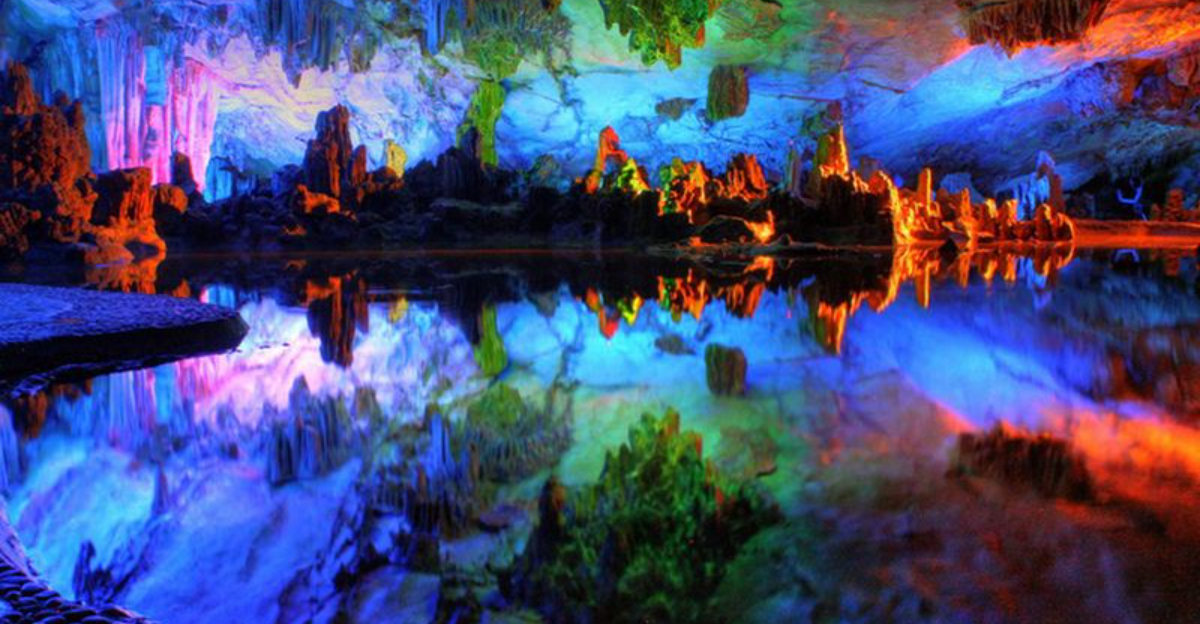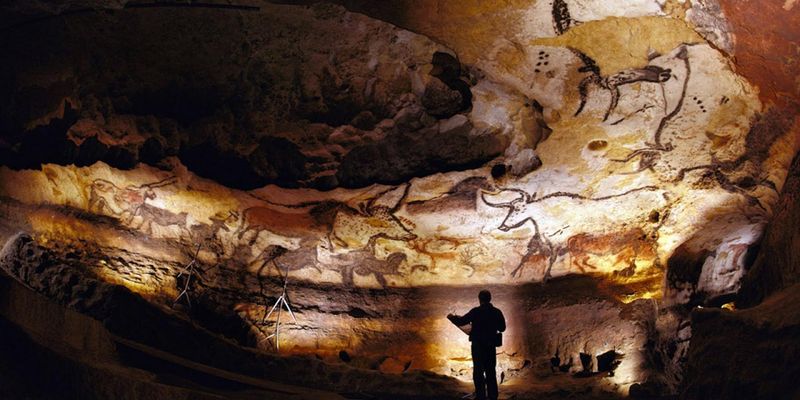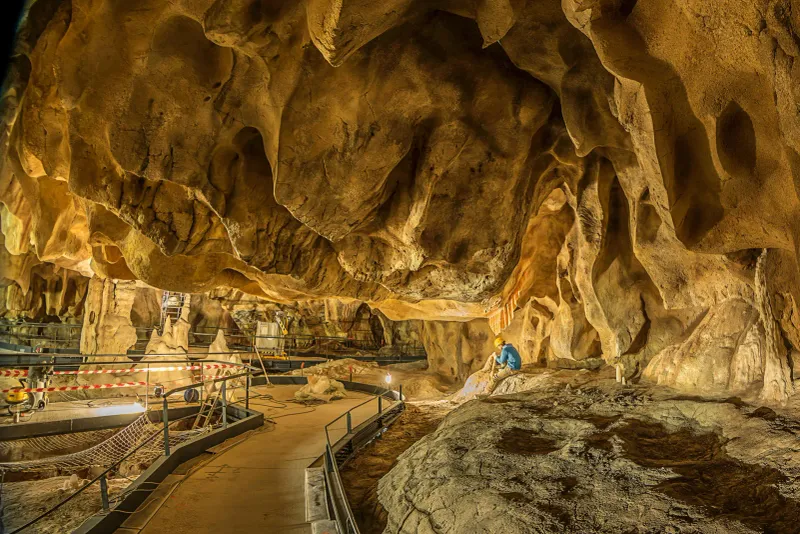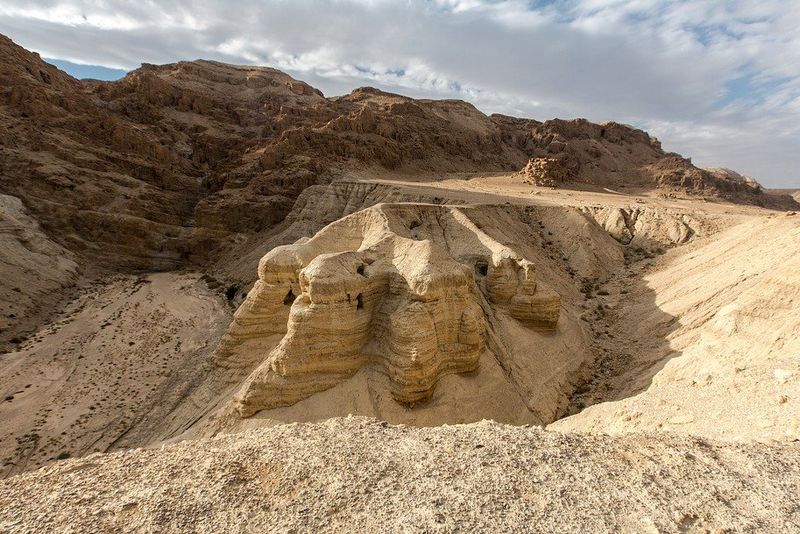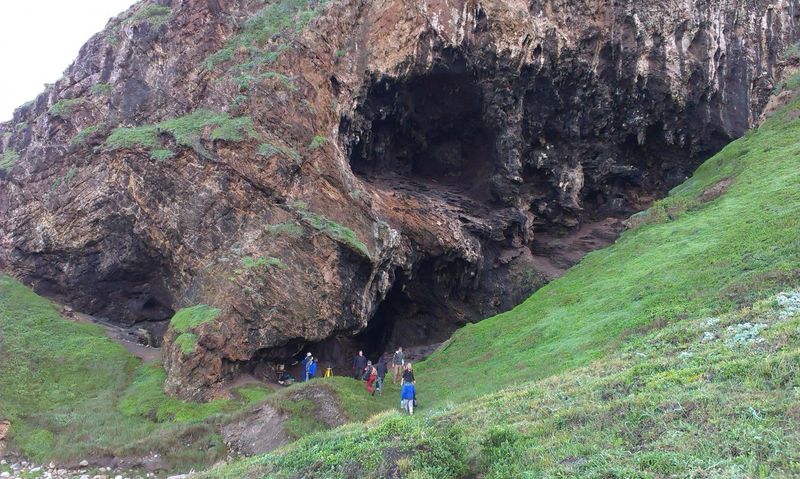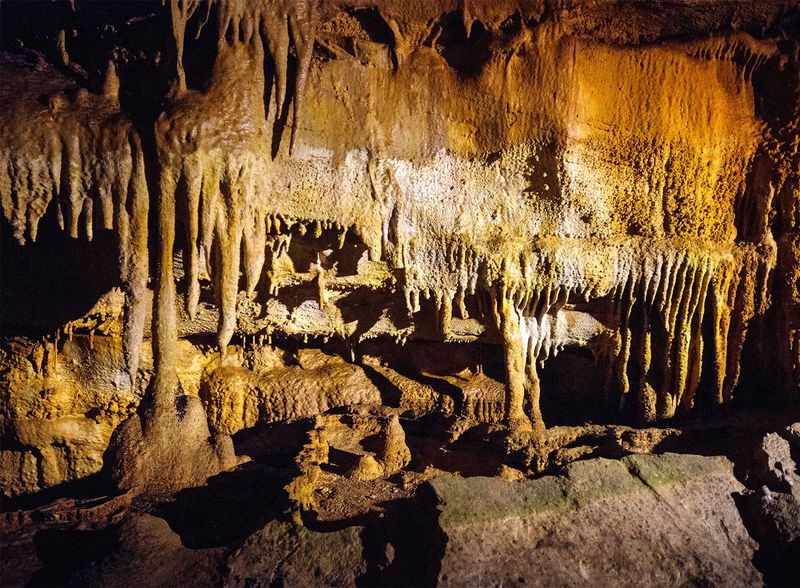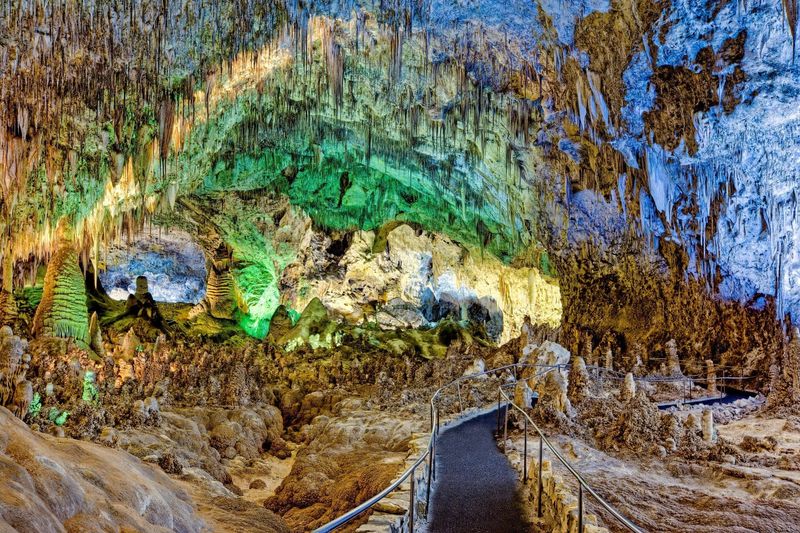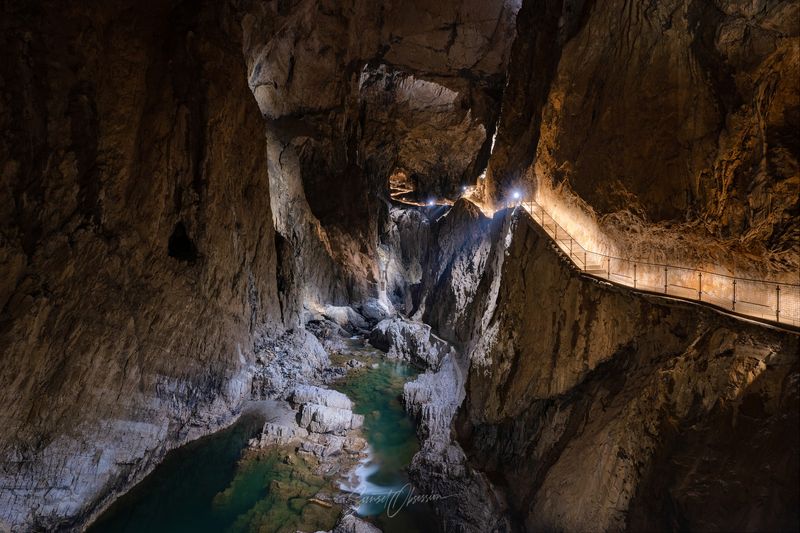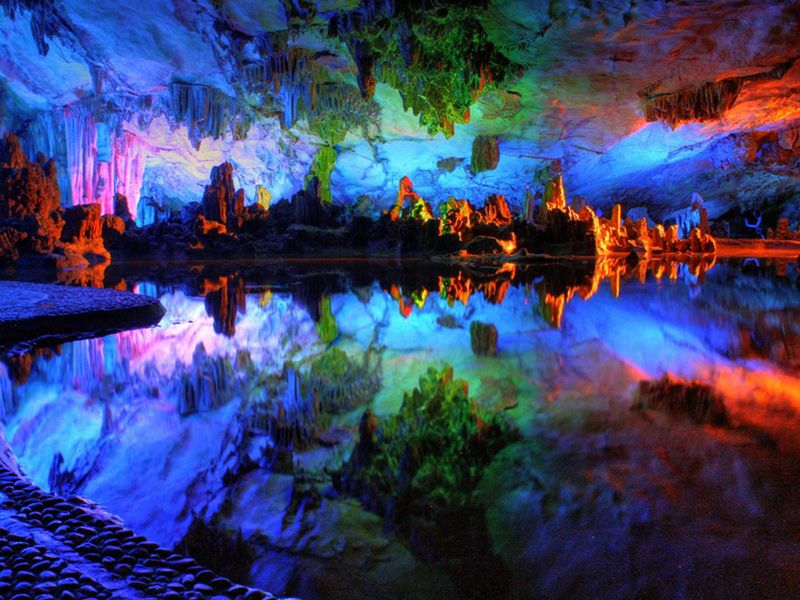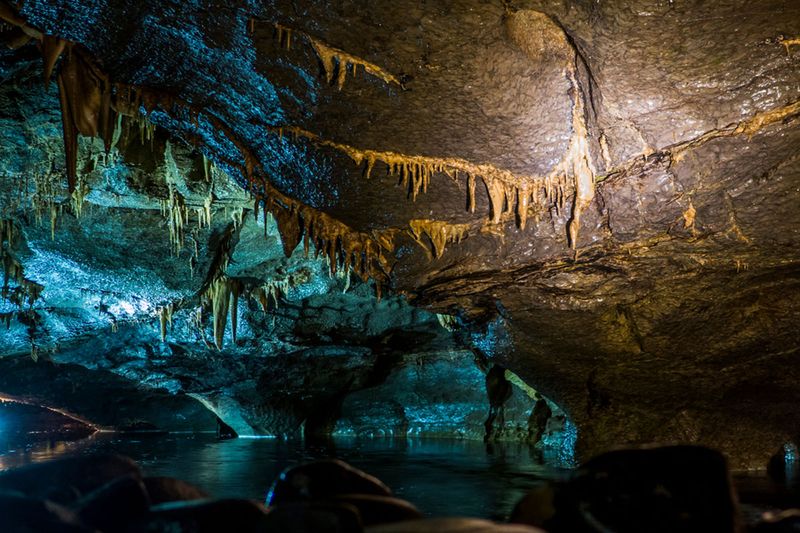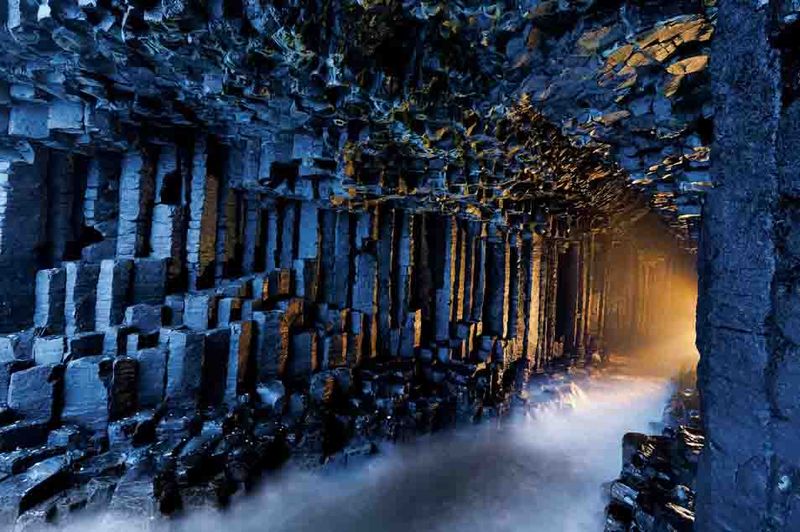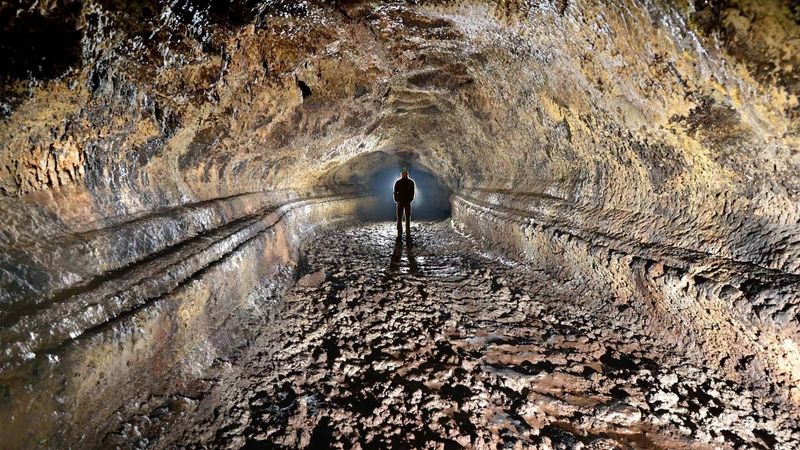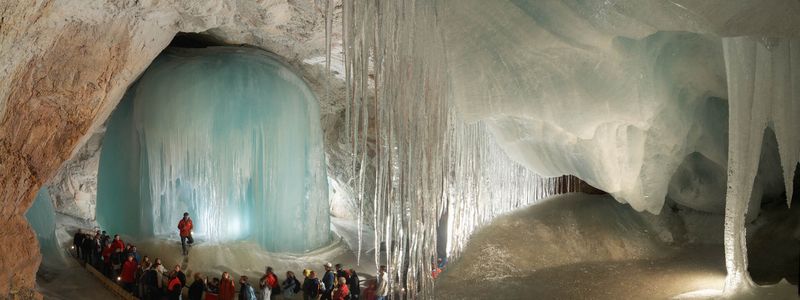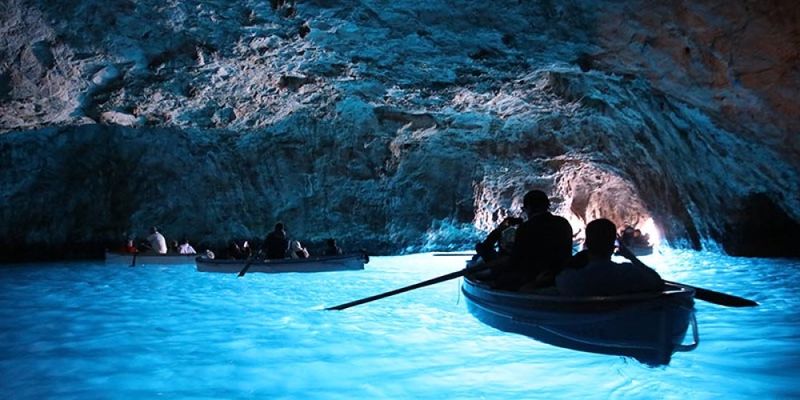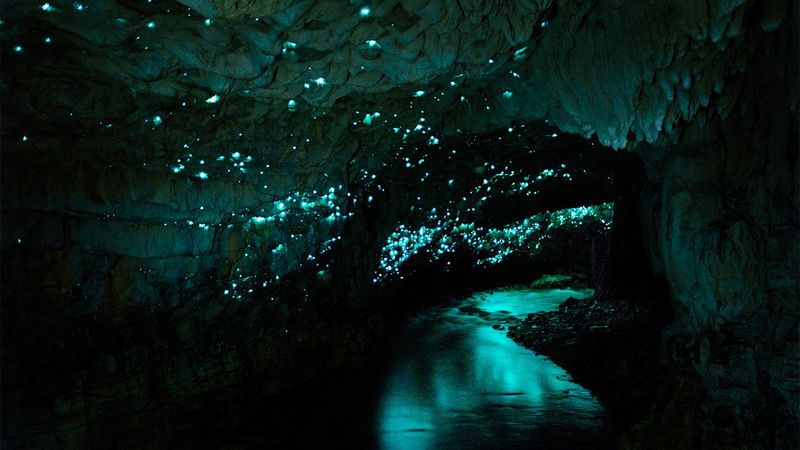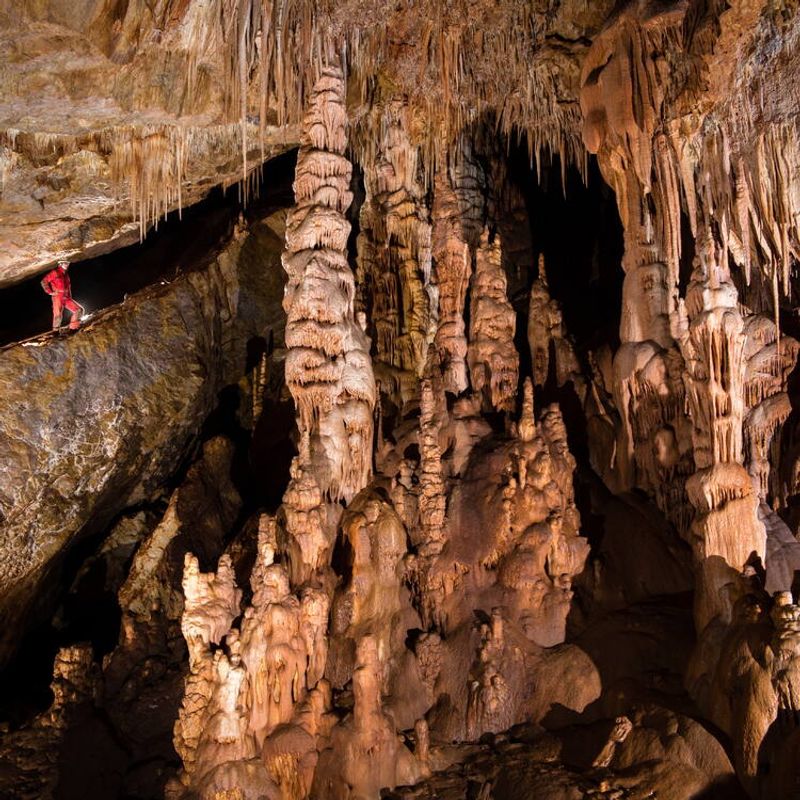Explore the hidden depths of history with our guide to 20 captivating underground caves. Each cave has a story to tell, etched in the stone walls or whispered through ancient echoes.
Join us on this journey through time and nature, where each unique cave offers a glimpse into the past, filled with stunning visuals and fascinating narratives.
Whether you’re a history buff, an adventure seeker, or simply curious, these caves promise to engage and inspire.
1. Lascaux Cave (France)
Lascaux Cave, nestled in the scenic Dordogne region of France, is famed for its intricate prehistoric paintings. As you step inside, the vivid depictions of horses and bulls transport you to a time when ancient artists expressed their connection to nature on these walls. Each painting is a masterful blend of technique and storytelling.
These depictions provide a remarkable insight into the beliefs and daily life of our distant ancestors. The ambiance within the cave invokes a sense of reverence. It’s a reminder of the continuity of human creativity and the timeless allure of art.
Though closed to the public to preserve its delicate state, replicas of the cave are available for viewing, ensuring that its legacy continues to inspire new generations.
2. Altamira Cave (Spain)
Altamira Cave, located in Cantabria, Spain, is home to some of the world’s most stunning prehistoric art. The ceiling explodes with vivid images of bison, boar, and other wildlife, crafted with a sophistication that belies their age. Stepping inside feels like entering an ancient gallery.
The use of natural pigments and the play of light and shadow bring the paintings to life, offering an extraordinary glimpse into the minds of our ancestors. The artistry speaks of a deep connection to the animals and environment.
Though access is restricted to preserve these treasures, replicas allow this cultural legacy to be appreciated worldwide.
3. Chauvet Cave (France)
Chauvet Cave, located in the picturesque Ardèche region of France, hosts some of the earliest known cave paintings. The walls are adorned with exquisite murals of lions, rhinos, and other majestic animals, offering a visual feast for the eyes.
These artworks, dating back over 30,000 years, demonstrate remarkable skill and creativity. The cave’s ambiance, heightened by the flickering light of a torch, evokes a sense of wonder and connection to our prehistoric past.
Though the cave is not open to the public for preservation reasons, a detailed replica allows visitors to experience its grandeur without compromising its integrity.
4. Cueva de las Manos (Argentina)
Cueva de las Manos, located in the heart of Patagonia, Argentina, is renowned for its vibrant handprint murals. The cave’s walls are adorned with stenciled hands in various colors, creating a striking visual narrative.
These handprints, believed to be over 9,000 years old, reflect the presence and creativity of ancient peoples. Their placement and coloration suggest a ritualistic or communicative purpose.
The surrounding Patagonian landscape adds to the cave’s allure, making it an essential destination for history enthusiasts and adventurers alike. The site continues to inspire and captivate all who visit.
5. Qumran Caves (West Bank)
The Qumran Caves, nestled in the arid desert landscape of the West Bank, are renowned for housing the Dead Sea Scrolls. These ancient texts, hidden for centuries, offer invaluable insights into early Judaism and the origins of Christianity.
The discovery of the scrolls in the mid-20th century was a monumental archaeological breakthrough. Each cave, cut into the limestone cliffs, whispers of history and discovery.
Visitors can explore the area, gaining a deeper understanding of its historical and religious significance. The caves’ rugged beauty and spiritual aura continue to draw scholars and history buffs from around the world.
6. Blombos Cave (South Africa)
Blombos Cave, perched on the southern coast of South Africa, is a testament to early human ingenuity. Inside, archaeologists have unearthed tools, ochre engravings, and artifacts dating back over 70,000 years.
The discoveries here have reshaped our understanding of human evolution, providing evidence of early symbolic thought and artistic expression. The cave’s cool, dark interior offers a stark contrast to the bright, open landscape outside.
Exploring this site evokes a sense of wonder at the creativity and adaptability of our ancestors. Blombos continues to be a key site for studying early human behavior and cognitive development.
7. Klasies River Caves (South Africa)
The Klasies River Caves, located along South Africa’s scenic coast, are a treasure trove of early human history. Archaeological finds include ancient hearths, stone tools, and human remains dating back over 100,000 years.
These caves offer crucial insights into the lives and diets of early Homo sapiens. The evidence suggests a sophisticated society capable of adapting to their environment using available resources.
The stunning coastal scenery surrounding the caves adds to their appeal, making them a compelling destination for both researchers and tourists. They continue to shed light on our distant past.
8. Pinnacle Point Caves (South Africa)
Pinnacle Point Caves, perched on the cliffs overlooking the Indian Ocean, are key to understanding early human coastal habitation. Inside, remnants of ancient fire pits and shell middens reveal a diet rich in marine resources.
These caves provide evidence of advanced cognitive abilities and adaptability, with artifacts dating back over 160,000 years. The ocean views from the cave are breathtaking, blending natural beauty with historical significance.
Exploration of Pinnacle Point offers insights into our ancestors’ survival strategies in coastal environments. It remains a focal point for research into human evolution and migration patterns.
9. Mammoth Cave (Kentucky, USA)
Mammoth Cave, situated in the rolling hills of Kentucky, USA, is the world’s longest cave system, stretching over 400 miles. Its vast chambers and intricate limestone formations are a testament to nature’s artistry.
Visitors can embark on guided tours, exploring the cave’s diverse ecosystems and learning about its geological history. The ambiance within the cave is both eerie and awe-inspiring, with stalactites and stalagmites creating a surreal landscape.
Mammoth Cave’s rich history is intertwined with tales of early explorers and its use as a saltpeter mine during the War of 1812. It continues to captivate adventurers and nature lovers.
10. Carlsbad Caverns (New Mexico, USA)
Carlsbad Caverns, located in the rugged landscape of New Mexico, USA, is known for its vast underground chambers and breathtaking rock formations. The Big Room, one of the world’s largest cave chambers, is a highlight.
Visitors can marvel at the intricate formations, including stalactites and stalagmites, sculpted by eons of water and time. The caverns’ ambiance is serene and otherworldly, offering a unique underground experience.
Guided tours provide insights into the cave’s history and geology, making it a must-visit destination for nature enthusiasts. Carlsbad Caverns continue to inspire awe and wonder.
11. Skocjan Caves (Slovenia)
Skocjan Caves, nestled in Slovenia’s karst landscape, is a natural wonder recognized for its vast underground canyon and river. The immense scale of the cave system is awe-inspiring, offering a unique glimpse into subterranean beauty.
Visitors can explore the cave’s intricate passages and admire the stunning stalactites and stalagmites. The sound of the rushing river adds to the cave’s mystical ambiance, creating an unforgettable experience.
As a UNESCO World Heritage Site, Skocjan Caves are protected for their geological and ecological significance, attracting adventurers and scientists alike.
12. Jeita Grotto (Lebanon)
Jeita Grotto, situated in the mountainous region of Lebanon, is renowned for its stunning stalactites and stalagmites. The cave system, comprising upper and lower galleries, offers a breathtaking spectacle of natural artistry.
Visitors can traverse the lower cave by boat, gliding through crystal-clear waters, while the upper gallery showcases magnificent formations lit by colorful lights. The ambiance is both enchanting and serene.
Jeita Grotto’s beauty and accessibility make it a popular attraction, drawing visitors from around the world. It continues to be a symbol of Lebanon’s natural heritage.
13. Reed Flute Cave (China)
Reed Flute Cave, located in Guangxi, China, is famed for its stunning limestone formations. The cave’s interior is illuminated by colorful lights, highlighting the intricate shapes and creating a magical atmosphere.
Visitors can explore the winding passages and admire the natural sculptures, each telling a story of geological evolution. The reflections in the cave’s clear waters add to the visual spectacle.
Reed Flute Cave is a popular tourist destination, celebrated for its beauty and accessibility. It continues to captivate all who venture inside, offering a glimpse into nature’s artistic prowess.
14. Marble Arch Caves (Northern Ireland)
Marble Arch Caves, nestled in the lush landscape of Northern Ireland, offers a subterranean adventure through its network of underground rivers and limestone formations. The cave’s beauty and geological significance are unparalleled.
Visitors can embark on guided tours, exploring the winding passages and admiring the natural sculptures. The sound of flowing water adds to the cave’s enchanting atmosphere.
As part of the Marble Arch Caves Global Geopark, this site is protected for its unique geology and ecology. It continues to inspire and educate visitors from around the world.
15. Fingal’s Cave (Scotland)
Fingal’s Cave, situated on the Isle of Staffa, Scotland, is renowned for its unique hexagonal basalt columns. The cave’s natural acoustics and the sound of crashing waves create an awe-inspiring atmosphere.
Visitors can explore the cave by boat, marveling at the geometric precision of the basalt formations. The interplay of light and shadow adds to the cave’s mystical allure.
Fingal’s Cave has inspired artists and musicians for centuries, including the composer Mendelssohn. Its beauty and natural wonder continue to captivate all who visit, offering a unique glimpse into geological artistry.
16. Cueva del Viento (Canary Islands, Spain)
Cueva del Viento, located in Tenerife, Canary Islands, is Europe’s largest lava tube and a testament to volcanic activity. The cave features a labyrinth of underground tunnels and unique lava formations.
Guided tours provide insights into the cave’s geological history and the processes that shaped its intricate passages. Visitors can explore the cool, dark tunnels, marveling at the natural beauty hidden below the surface.
Cueva del Viento’s volcanic origins and stunning formations make it a must-visit destination for geology enthusiasts and adventurers alike, offering a glimpse into the Earth’s fiery past.
17. Eisriesenwelt (Austria)
Eisriesenwelt, located in the Tennengebirge mountains of Austria, is the world’s largest ice cave. Its vast chambers are filled with stunning ice formations, creating a breathtaking frozen wonderland.
Visitors can traverse the icy passages, marveling at the intricate sculptures carved by nature’s hand. The cave’s freezing atmosphere adds to the otherworldly experience.
Guided tours offer insights into the cave’s geological features and the history of its discovery. Eisriesenwelt’s icy beauty and grandeur continue to attract adventurers and nature lovers from around the globe.
18. Blue Grotto (Grotta Azzurra, Italy)
The Blue Grotto, or Grotta Azzurra, located on the island of Capri, Italy, is famed for its mesmerizing blue waters. Sunlight filters through the underwater cavity, illuminating the cave with an ethereal glow.
Visitors can enter the cave by boat, experiencing the surreal beauty of the glowing waters and the cave’s tranquil atmosphere. The natural light show is a captivating spectacle.
The Blue Grotto’s enchanting allure has been celebrated since Roman times, and it continues to be a highlight for tourists visiting Capri. Its magical ambiance offers a unique and unforgettable experience.
19. Waitomo Glowworm Caves (New Zealand)
Waitomo Glowworm Caves, located in New Zealand, offer a magical underground experience. The cave ceilings are illuminated by thousands of glowworms, creating a stunning starry effect.
Visitors can explore the caves by boat, gliding through the glowing grotto and witnessing the natural light spectacle. The serene ambiance adds to the enchantment, making it a unique attraction.
The glowworms’ bioluminescence is a natural wonder, drawing visitors from around the world. Waitomo Glowworm Caves continue to captivate and inspire awe, offering a glimpse into a hidden world of beauty.
20. Aggtelek Karst Caves (Hungary/Slovakia)
Aggtelek Karst Caves, straddling the border of Hungary and Slovakia, are part of a vast karst landscape. The caves boast an array of stalactites and stalagmites, each formation telling a story of geological time.
Visitors can explore the extensive system, marveling at the intricate beauty of the natural sculptures. The caves’ rich biodiversity adds to their allure, offering a unique underground ecosystem.
As a UNESCO World Heritage Site, Aggtelek Karst Caves are protected for their geological and ecological importance. They continue to intrigue and educate visitors, providing insights into Earth’s history.
